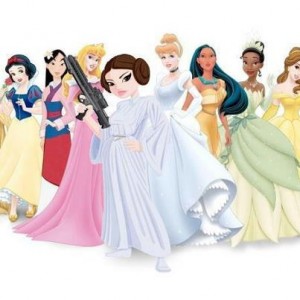 Andrejevic’s article talked about social network exploitation. Given immensely popular social networks and many anecdotal success stories from using social network as career makers or investor recruiting tools, social media presence is becoming a new norm for current digital age. While communications and information exchanges become more intuitive and human oriented, the boundaries between exploitation of information and sharing of contents is becoming blurry. Even worse, business worlds’ active usages on employees and customers recruitments nearly reached the point to jeopardize individual privacy. On the one hand, employers’ oversight on internal communications was never a new thing. Old wisdom prevail on employment common senses that you would better not send out your resume electronically and spend time on phone interviews at your office during the office hour because THEY can hear you and your priority of receiving pink slip would likely bump up (way up). Hence, it may not be surprising to see companies’ use of the same logic on employees’ social media usage. However, use of social media still relies on individual socialiability within privately operated infrastructure like Facebook. Hence, the separation between digital personal lives and employment should be honored with the only exception of employments that companies generate revenues from social media presence and network reach. On the other hand, such use of collected personal data by the infrastructure offering firms like Facebook cannot be qualified as exploitation because they use the voluntarily provided information that users agreed upon account creations. Although some may argue that many social media companies abuse such voluntarily provided customer information, we still need to acknowledge that any service is associated with cost, and in the case of social media companies, user-created contents are their source of incomes.
Andrejevic’s article talked about social network exploitation. Given immensely popular social networks and many anecdotal success stories from using social network as career makers or investor recruiting tools, social media presence is becoming a new norm for current digital age. While communications and information exchanges become more intuitive and human oriented, the boundaries between exploitation of information and sharing of contents is becoming blurry. Even worse, business worlds’ active usages on employees and customers recruitments nearly reached the point to jeopardize individual privacy. On the one hand, employers’ oversight on internal communications was never a new thing. Old wisdom prevail on employment common senses that you would better not send out your resume electronically and spend time on phone interviews at your office during the office hour because THEY can hear you and your priority of receiving pink slip would likely bump up (way up). Hence, it may not be surprising to see companies’ use of the same logic on employees’ social media usage. However, use of social media still relies on individual socialiability within privately operated infrastructure like Facebook. Hence, the separation between digital personal lives and employment should be honored with the only exception of employments that companies generate revenues from social media presence and network reach. On the other hand, such use of collected personal data by the infrastructure offering firms like Facebook cannot be qualified as exploitation because they use the voluntarily provided information that users agreed upon account creations. Although some may argue that many social media companies abuse such voluntarily provided customer information, we still need to acknowledge that any service is associated with cost, and in the case of social media companies, user-created contents are their source of incomes.
Such clashes are also extended into media sphere. Come to think of it, I was also one of content producers, although nobody actually saw my contents. When I was a kid, I used to take supposedly artistic pictures, and scribbled some weird stories. I surely lived mixed cassette tape era with my productions of romantic-mood enhancing song lists. Unlike myself, as Justin Bieber got his break from YouTube videos, social media opened up new paths where ones with talents can make their way into professional realms while established industries started to see that some wannabes are invading their turfs. In this sense, social media is disruptive and innovative.
Thus, as Jenkins elaborated, in the era of social media and higher accessibility of consumer-oriented technologies, consumer-generated contents will not disappear. Although Banks and Humphreys (2008) mentioned clashes between professionals and common users over content creations, I highly doubt that user-creations will entirely take over the realm of professionals because only few actually has talents and passions while common users often have more of passions than talents. Regardless how visible and how many user generated contents appear to dominate media sphere, in the end, only good stuffs will survive.

